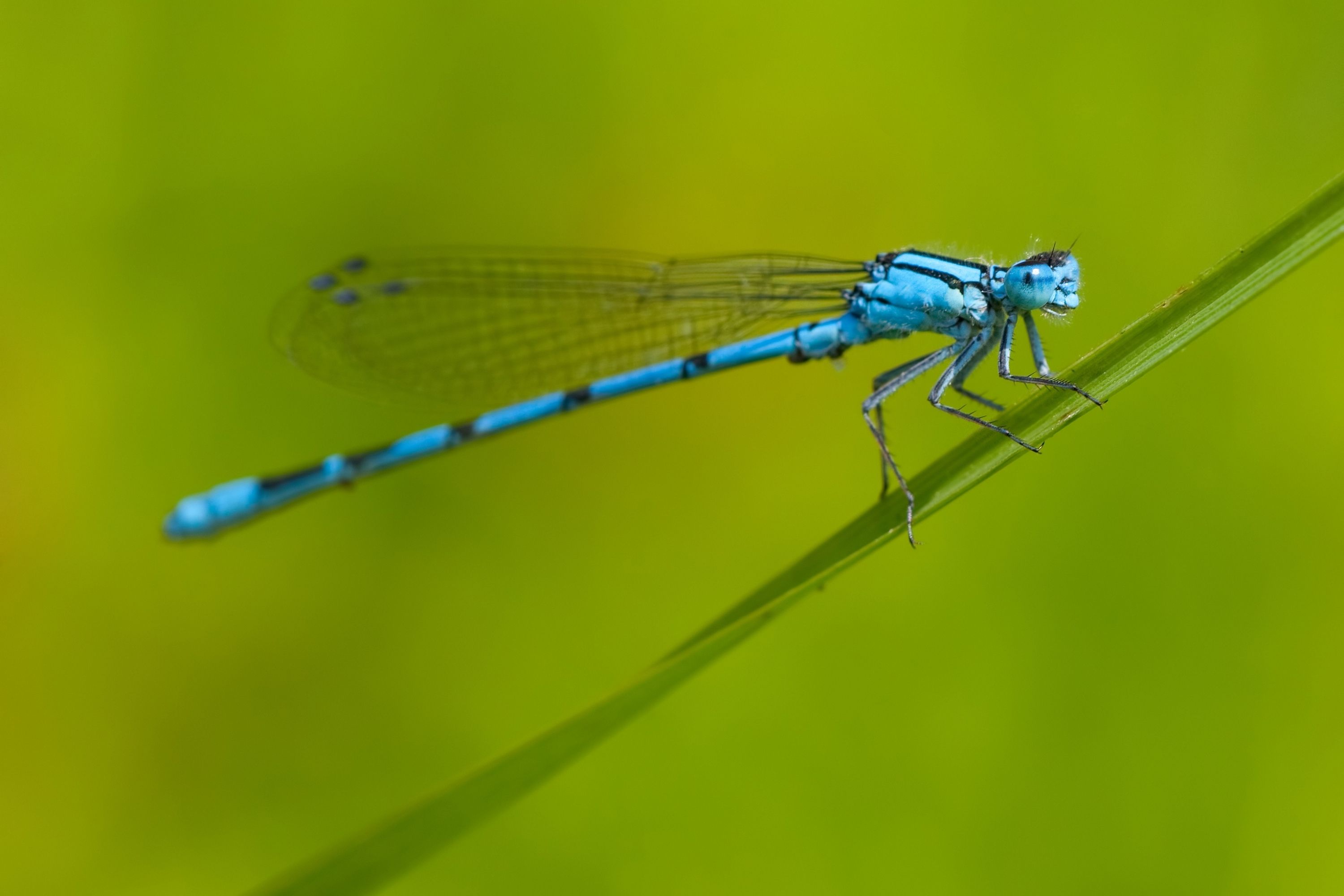Common blue damselfly
(Enallagma cyathigerum)

Description
Enallagma cyathigerum (common blue damselfly, common bluet, or northern bluet) is a species found mainly between latitudes 40°N and 72°N; It is widely distributed in the Palearctic, and the Nearctic species Enallagma annexum was at one time considered to be synonymous with it. The species can reach a length of 32 to 35 mm (1.3 to 1.4 in). It is common in many different countries including Russia, Sweden, Norway, Finland, the United States of America, and South Korea. Damselflies are an important link between the health of the aquatic ecosystem and its response to climate change. These damselflies inhabit freshwater bodies whose conditions range, they have been seen in acidic fens as well as eutrophic ponds.They have been considered one of the more sensitive insects in an aquatic setting.They are important within the trophic levels as they are an intermediate predator. They consume smaller larvae and they are preyed on by fish and larvae bigger than them. The larvae prefer a habitat that has a more complex structure in the ground composition as well as the plants. The larval stages spend most of their time within the plants, climbing and feeding. Although they do prefer a more complex habitat, they can also be found in habitats with simpler vegetation. They are efficient in both complexities equally, but the complex vegetation also serves as protection from fish. These larvae are able to live in a dense population in shallow areas of water without showing signs of competition between the larvae. The damselfly larvae require a plant structure that can withstand the backward movement that occurs when the labium protracts to catch food.
Taxonomic tree:







